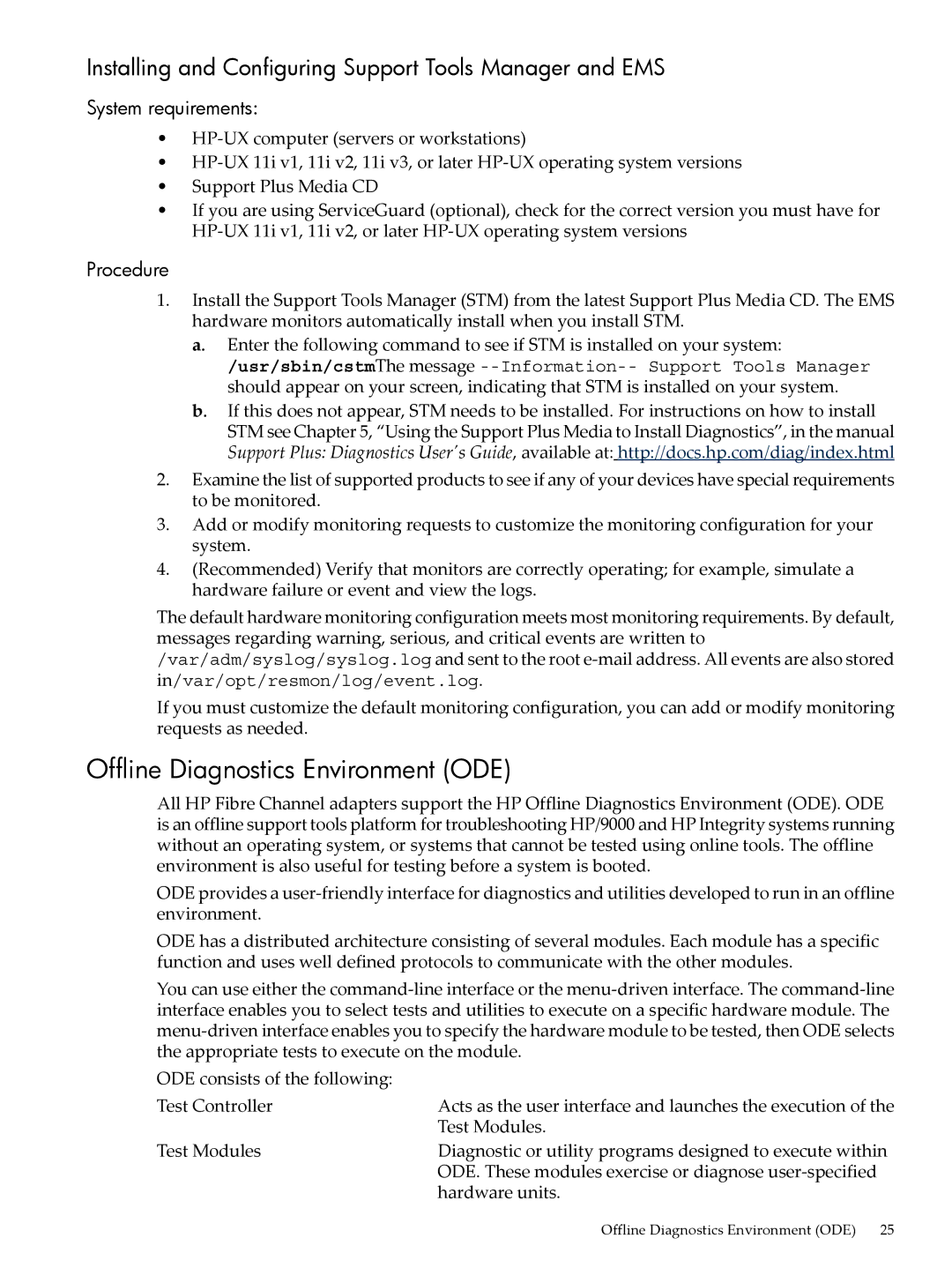Installing and Configuring Support Tools Manager and EMS
System requirements:
•
•
•Support Plus Media CD
•If you are using ServiceGuard (optional), check for the correct version you must have for
Procedure
1.Install the Support Tools Manager (STM) from the latest Support Plus Media CD. The EMS hardware monitors automatically install when you install STM.
a.Enter the following command to see if STM is installed on your system:
/usr/sbin/cstmThe message
b.If this does not appear, STM needs to be installed. For instructions on how to install STM see Chapter 5, “Using the Support Plus Media to Install Diagnostics”, in the manual Support Plus: Diagnostics User's Guide, available at: http://docs.hp.com/diag/index.html
2.Examine the list of supported products to see if any of your devices have special requirements to be monitored.
3.Add or modify monitoring requests to customize the monitoring configuration for your system.
4.(Recommended) Verify that monitors are correctly operating; for example, simulate a hardware failure or event and view the logs.
The default hardware monitoring configuration meets most monitoring requirements. By default, messages regarding warning, serious, and critical events are written to /var/adm/syslog/syslog.log and sent to the root
If you must customize the default monitoring configuration, you can add or modify monitoring requests as needed.
Offline Diagnostics Environment (ODE)
All HP Fibre Channel adapters support the HP Offline Diagnostics Environment (ODE). ODE is an offline support tools platform for troubleshooting HP/9000 and HP Integrity systems running without an operating system, or systems that cannot be tested using online tools. The offline environment is also useful for testing before a system is booted.
ODE provides a
ODE has a distributed architecture consisting of several modules. Each module has a specific function and uses well defined protocols to communicate with the other modules.
You can use either the
ODE consists of the following: |
|
Test Controller | Acts as the user interface and launches the execution of the |
| Test Modules. |
Test Modules | Diagnostic or utility programs designed to execute within |
| ODE. These modules exercise or diagnose |
| hardware units. |
Offline Diagnostics Environment (ODE) 25
